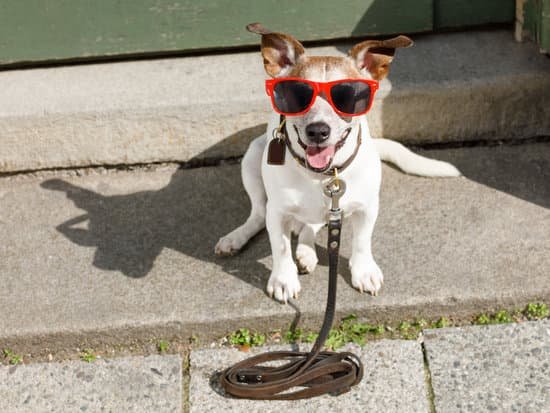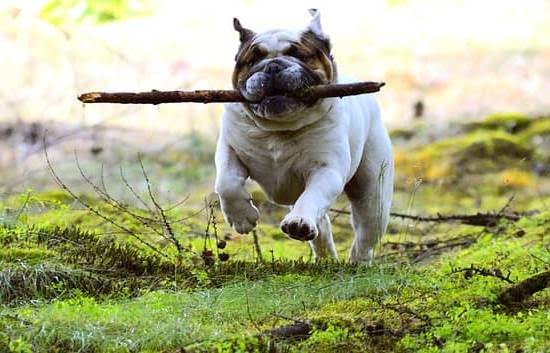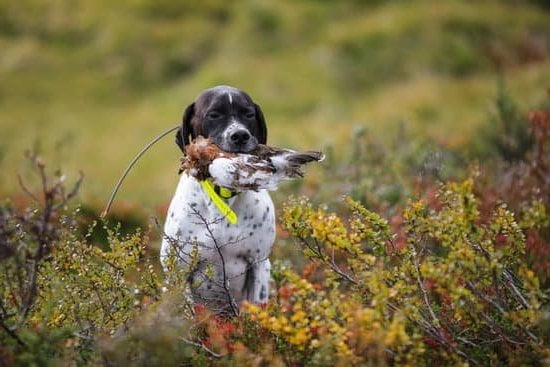Dogs chasing cats is a common scenario that many pet owners face, often leading to chaos and tension in the household. The question lingers: can you train a dog to not chase a cat? This behavior can be challenging for pet owners to manage as it disrupts the peace between furry companions and can even result in potential risks and dangers.
Understanding the instinctual behavior behind why dogs chase cats is essential in addressing this issue. Dogs have a natural inclination to chase cats rooted in their evolutionary past. Historically, dogs were predators who hunted for survival, making them prone to chasing anything that triggers their prey drive, such as fast-moving creatures like cats.
The consequences of dog-chasing-cat behavior can be detrimental, ranging from injuries to both animals involved to stress for the pet owner. Training your dog not to chase cats becomes imperative for maintaining a harmonious environment at home and ensuring the safety and well-being of all pets. By implementing effective training techniques and consistent positive reinforcement strategies, you can help modify your dog’s behavior towards cats and foster peaceful coexistence among your furry companions.
Understanding the Instinctual Behavior
Dogs have long been known to exhibit a natural inclination to chase cats, a behavior that can be traced back to their evolutionary history. In the wild, dogs are predators, and their ancestors would often hunt smaller animals for survival.
This predatory instinct has been passed down through generations, making chasing small creatures like cats an innate behavior in many dogs. It is essential for pet owners to understand this instinctual behavior in order to address it effectively and prevent potential conflicts between their dog and a feline companion.
Evolutionary Reasons Behind the Behavior
The act of chasing cats can be linked to a dog’s prey drive, which is a deeply rooted survival instinct. In the wild, dogs would need to chase and capture prey for sustenance.
This hunting instinct is still present in domesticated dogs today, leading them to view small animals like cats as potential targets for play or pursuit. Understanding this evolutionary background can help pet owners approach training with empathy and patience, recognizing that it is not just a matter of discipline but also about redirecting natural behaviors in a positive way.
Challenges in Overcoming Instinctual Behavior
Training a dog to not chase a cat can be challenging due to the strong instincts at play. Even well-trained dogs may struggle to resist the urge to pursue a fleeing cat, especially if they have not been properly socialized or exposed to felines from a young age.
Patience, consistency, and positive reinforcement techniques are essential when working with a dog’s instinctual behavior. By understanding the root of this impulse in your dog, you can tailor your training methods effectively and encourage more appropriate interactions between your canine companion and any resident cats.
The Consequences of Dog-Chasing-Cat Behavior
When dogs chase cats, it can lead to various consequences that pose risks for both the animals involved and the pet owners. One of the primary dangers is the potential for injuries to occur.
Cats, in particular, are agile creatures that may defend themselves when feeling threatened, leading to scratches or bites on a dog’s nose, ears, or face as a result of chasing behavior. Conversely, if a dog manages to catch up with a cat, it could result in serious harm to the feline due to its smaller size and vulnerability in such situations.
Beyond physical injuries, the act of chasing cats can also lead to emotional stress for pet owners. Witnessing their dog relentlessly pursuing a cat can be anxiety-inducing and frustrating, especially if they have multiple pets at home.
Additionally, the constant need to intervene and separate the animals can disrupt the peaceful coexistence within the household and create tension among family members. This added emotional burden on pet owners highlights why it is essential to address and modify this behavior through proper training methods.
Another consequence of dogs chasing cats is the impact it can have on inter-animal relationships within a home. If left unaddressed, persistent chasing behavior can strain the bond between pets and create an atmosphere of fear or discomfort for the targeted cats.
This can lead to behavioral issues in both animals, affecting their overall well-being and quality of life. By recognizing these potential risks associated with dog-chasing-cat behavior, pet owners can take proactive steps to train their dogs effectively and prevent any negative outcomes from occurring.
| Risks | Consequences |
|---|---|
| Possible injuries to both animals | Physical harm due to chasing behavior |
| Emotional stress for pet owners | Anxiety and frustration from witnessing chasing incidents |
| Impact on inter-animal relationships | Disruption in bond between pets leading to fear or behavioral issues |
Importance of Training
Dogs chasing cats is a common scenario that many pet owners face, leading to challenges in maintaining peace and harmony within the household. The instinctual behavior of dogs to chase cats can result in potential dangers and risks for both animals involved, as well as cause stress for the pet owner. Training your dog to not chase a cat is essential not only for the safety of your pets but also for fostering a positive and peaceful environment at home.
Understanding the Benefits of Training
Training your dog to not chase a cat goes beyond just preventing conflicts between your furry companions. It
Creating a Safe Environment
One of the key benefits of training your dog to not chase a cat is ensuring the safety and well-being of both pets. Cats are smaller than dogs and may be easily injured if chased or cornered by their canine counterparts.
Additionally, constant stress from being chased
Training Methods
Training your dog to not chase a cat can be a challenging but achievable task with the right training methods and techniques. By utilizing positive reinforcement strategies, you can effectively modify your dog’s behavior towards cats and promote peaceful coexistence within your household. Here are some effective training methods that you can implement:
- Counterconditioning: This technique involves changing your dog’s negative association with cats by pairing their presence with something positive, such as treats or toys. Gradually, your dog will learn to view cats in a more positive light.
- Desensitization: This method involves exposing your dog to cats from a distance and gradually decreasing the distance over time. By slowly acclimating your dog to the presence of cats, you can help reduce their urge to chase.
- Teaching “Leave It” or “Stay”: Training your dog commands such as “leave it” or “stay” can help redirect their focus when they see a cat, giving you control over their behavior and preventing them from chasing.
In addition to these training methods, consistency is key in reinforcing positive behavior and setting clear boundaries for your dog. It’s essential to remain patient and dedicated throughout the training process, as changing ingrained behaviors takes time and effort. By consistently practicing these techniques and providing rewards for good behavior, you can help your dog learn to coexist peacefully with cats.
Remember that seeking professional help from a qualified dog trainer or animal behaviorist is always an option if you encounter difficulties in training your dog. These professionals have the expertise and experience to assess your specific situation and provide tailored guidance to address the challenges you may face. With dedication, patience, and the right training approach, you can train your dog to not chase a cat successfully and create a harmonious environment for all your furry companions.
Consistency Is Key
Training your dog to not chase a cat can be a challenging task, but consistency is key in achieving success. By establishing clear boundaries and rules, you can help your furry friend learn to coexist peacefully with cats in your household. Consistency in training means enforcing the same expectations and consequences every time your dog displays chasing behavior towards a cat. This helps them understand what is acceptable behavior and what is not.
To maintain consistency in training your dog, consider implementing the following strategies:
- Set clear boundaries: Clearly define areas where your dog is allowed to interact with the cat and where they are not. This could include designating certain spaces as off-limits or using baby gates to separate the animals when needed.
- Use positive reinforcement: Reward good behavior such as ignoring the cat or playing calmly with treats, toys, or praise. This will encourage your dog to repeat desirable behaviors while discouraging chasing.
- Stay calm and firm: When correcting your dog for chasing behavior, remain calm but assertive. Avoid yelling or physical punishment, as this can cause fear or confusion in your pet.
By consistently applying these techniques and reinforcing positive behaviors, you can train a dog to not chase a cat effectively over time. Remember that patience and persistence are key in changing ingrained behaviors, so celebrate even small successes along the way. With dedication and a proactive approach, you can create a harmonious environment where your dog and cat can peacefully coexist.
Seeking Professional Help
Professional assistance is especially valuable when dealing with stubborn or deeply ingrained chasing instincts in dogs. Trainers and behaviorists use science-based methods to implement training techniques that can gradually teach your dog to coexist peacefully with cats. They also offer support and guidance throughout the training process, ensuring that both your dog and the cat are kept safe during interactions.
In addition to practical training strategies, professional help can also provide valuable insights into the underlying reasons for your dog’s chasing behavior. Understanding the root cause of this instinctual behavior can aid in developing a comprehensive training plan that addresses the issue at its core. By working with experts in canine behavior, you can improve the relationship between your pets and create a harmonious environment in your home.
| Benefit of Professional Help | Effective Training Techniques |
|---|---|
| Expert assessment of dog’s behavior | Safe and humane modification of behaviors |
| Guidance on addressing triggers | Support throughout the training process |
| Insights into underlying reasons for chasing behavior | Improvement in pet relationships and household harmony |
Case Studies and Success Stories
Training a dog to not chase a cat can indeed be a challenging task, but with dedication and patience, it is possible to achieve positive outcomes. Many pet owners have successfully modified their dogs’ behavior towards cats through consistent training and the use of positive reinforcement techniques. By understanding the instinctual behavior of dogs and the potential risks associated with chasing cats, pet owners can take proactive steps to create a harmonious environment for all their furry companions.
One real-life example of success in training a dog to not chase cats is the story of Max, a playful Labrador who initially had a strong urge to chase any cat he spotted. His owner, Sarah, decided to enroll him in obedience training classes focused on teaching him impulse control and proper socialization skills. Through consistent practice and rewards for good behavior, Max gradually learned to ignore cats and even became friends with Sarah’s own feline companion.
Another inspiring case study involves Bella, a rescued mixed breed who used to display aggressive behavior towards cats due to fear and insecurity. With the help of a certified animal behaviorist, Bella’s owner implemented desensitization techniques and gradual exposure to cats in controlled environments.
Over time, Bella learned to feel more comfortable around felines and stopped chasing them altogether. These success stories demonstrate that with determination and the right approach, pet owners can train their dogs to coexist peacefully with cats, ensuring a safe and harmonious household for all.
Frequently Asked Questions
How Do I Train My Dog to Leave My Cat Alone?
Training a dog to leave a cat alone requires patience and consistency. Start by teaching the “leave it” command and rewarding positive behavior around the cat. Supervise their interactions closely and redirect any unwanted behavior with a toy or treat.
How Do I Stop My Dog From Attacking My Cat?
To stop a dog from attacking a cat, it’s crucial to address the underlying reasons for this behavior. Consult with a professional trainer or behaviorist to develop a tailored training plan that focuses on positive reinforcement and desensitization techniques.
Can Dogs Be Trained to Be Cat Friendly?
Dogs can indeed be trained to be cat-friendly through gradual introductions, positive associations, and consistent training. It’s essential to understand each animal’s body language and provide them with safe spaces where they can retreat if they feel uncomfortable. Remember that patience is key in fostering a harmonious relationship between dogs and cats.

Welcome to the blog! I am a professional dog trainer and have been working with dogs for many years. In this blog, I will be discussing various topics related to dog training, including tips, tricks, and advice. I hope you find this information helpful and informative. Thanks for reading!





